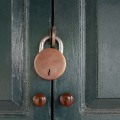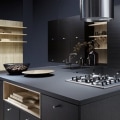Budgeting for new kitchen cabinets is a crucial aspect of any kitchen renovation project. The cost can vary widely depending on several factors, including the quality of materials, the size of your kitchen, and the complexity of the design. As a general contractor in Los Angeles, California, I know that kitchen cabinets can account for a significant portion of your total kitchen remodeling budget, often as much as 40-50%.
The first step in budgeting is to determine the scope of your project. Are you looking for stock cabinets, semi-custom, or fully custom solutions? Stock cabinets are the most affordable option, offering standard sizes and styles with limited customization. These are ideal for homeowners looking for cost-effective solutions without specific requirements for space or style. Semi-custom cabinets provide more options in terms of sizing and styles, allowing for a degree of personalization while still being relatively budget-friendly. Fully custom cabinets, on the other hand, are the most expensive option. They are designed and built to fit your exact specifications and can include unique features, materials, and finishes.
Material choice also plays a significant role in determining the cost. Options range from laminate and thermofoil, which are on the lower end of the cost spectrum, to wood and high-quality veneers, which are more expensive. The choice of material not only impacts the cost but also the longevity and appearance of the cabinets.
Labor costs are another significant factor to consider. If you're planning to hire a professional to install your cabinets, this can add considerably to the overall cost. The complexity of the installation, the time it takes, and the contractor's rate will all influence the final price.
Additionally, it’s important to factor in the costs of any related renovations that might be necessary. For instance, if you’re planning on home window tinting to reduce glare and heat in your kitchen, this should be included in your overall budget. While not directly related to the cabinets, these ancillary costs can add up and should be considered in the initial planning stages.
Other expenses to consider include hardware such as handles and knobs, interior organizers, and modifications to accommodate appliances. These details, while seemingly small, can add up and have a significant impact on the overall cost.
In summary, when budgeting for new kitchen cabinets, it's important to consider the type of cabinets, the materials used, labor costs, and any additional renovations or upgrades. Prices can range from a few thousand dollars for basic stock cabinets to tens of thousands for high-end, custom-made solutions. It's advisable to get quotes from multiple suppliers and contractors to find the best option that fits your needs and budget. Remember, investing in quality cabinets can enhance the functionality and aesthetic appeal of your kitchen, ultimately adding value to your home.


